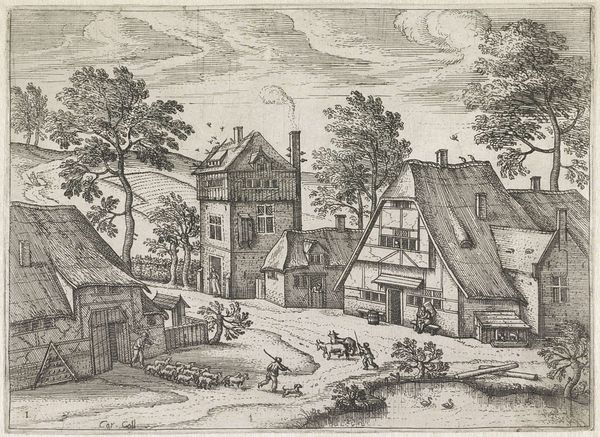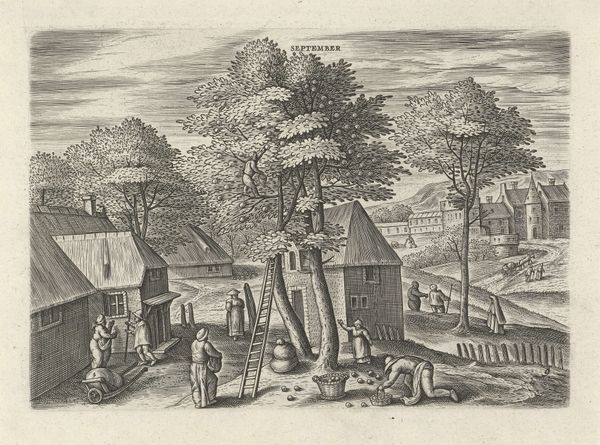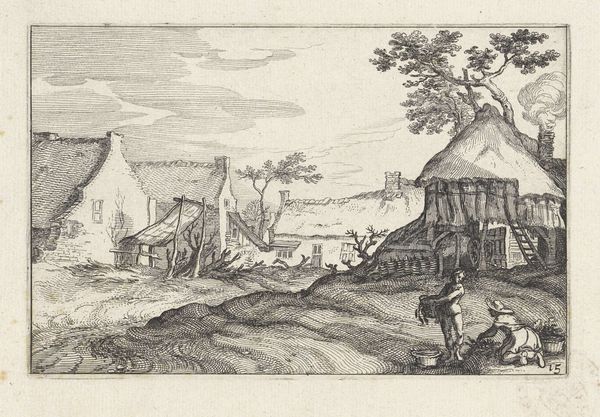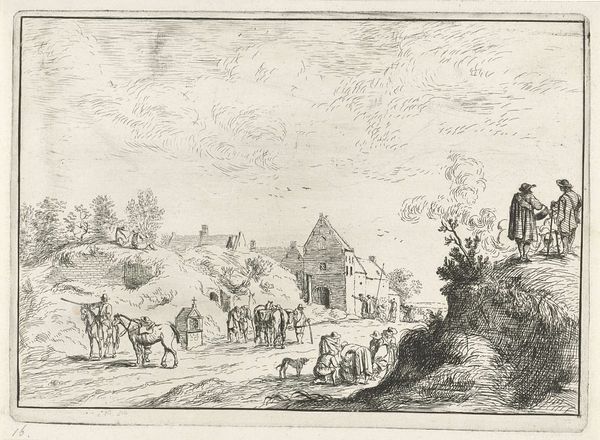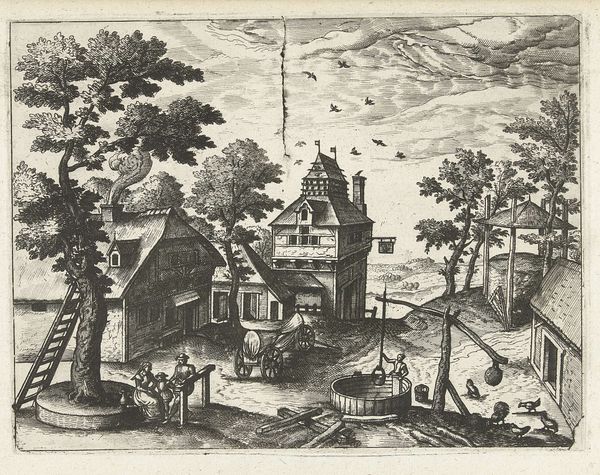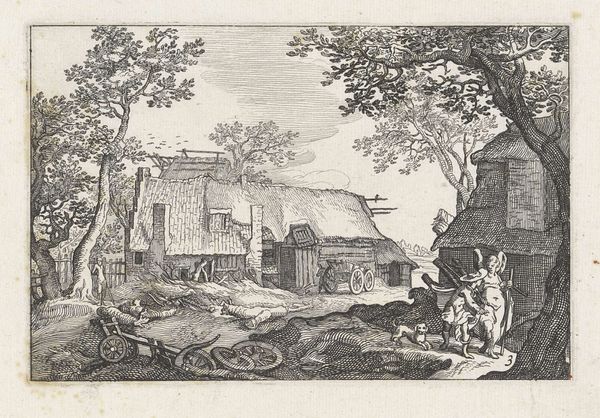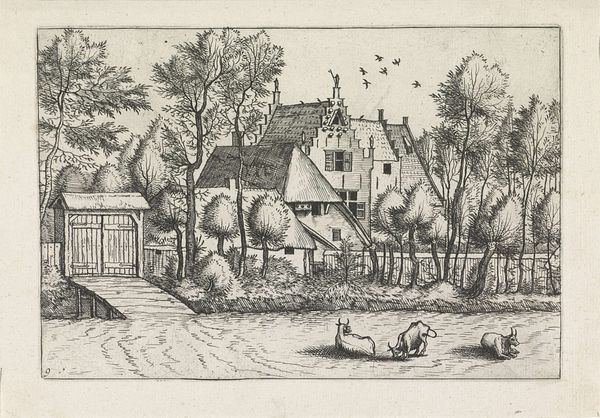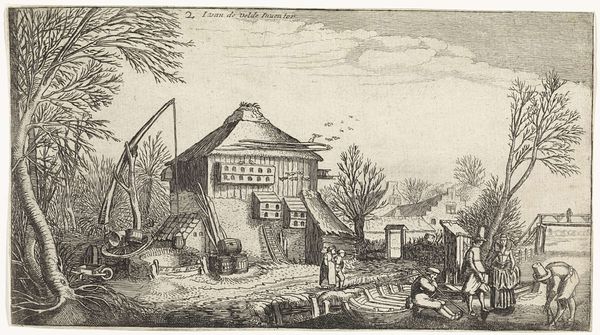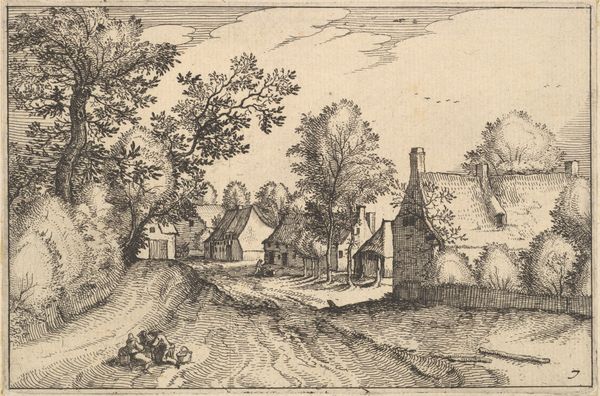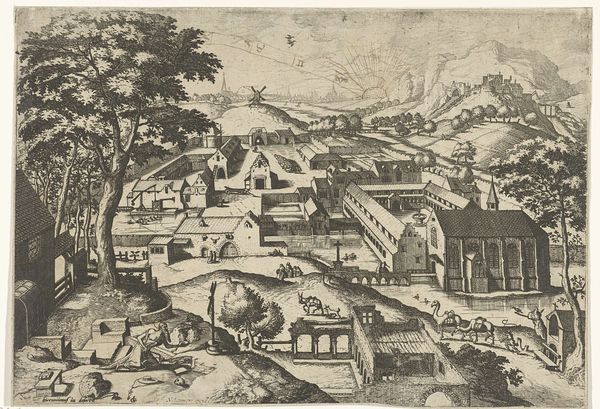
print, engraving
#
dutch-golden-age
# print
#
landscape
#
figuration
#
cityscape
#
genre-painting
#
engraving
#
realism
Dimensions: height 138 mm, width 201 mm
Copyright: Rijks Museum: Open Domain
Pieter van der Borcht created this print of a village square around the year 1600 using the technique of engraving. The process begins with a metal plate, likely copper, into which the artist etches lines using a tool called a burin. Ink is then forced into these lines, and the surface is wiped clean before being pressed onto paper. The resulting print bears the mark of this process, with crisp, precise lines defining the forms and textures. The sharp contrast between the ink and paper heightens the details of daily life, from the thatched roofs to the figures inhabiting the scene. Engraving like this was a painstaking, highly skilled tradition. The work of engravers, though, was often channeled into reproductive prints. These allowed for images to be circulated widely, contributing to the flow of information and the development of a visual culture at the dawn of the modern era. It also reminds us that the concept of 'originality' is more complex than we often assume.
Comments
No comments
Be the first to comment and join the conversation on the ultimate creative platform.
